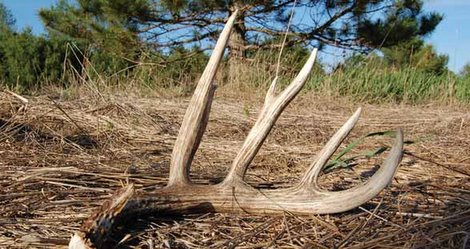
A Good Hatch in 2011 Should Increase Turkey Numbers Throughout Missouri
In 2011, relatively dry conditions and an emergence of periodical cicadas that provided protein-rich food for nesting hens and growing poults helped Missouri’s turkey population experience its best hatch in nearly a decade. Brood-survey results indicated that 2011’s hatch was 42 percent above the previous five-year average. An especially notable improvement occurred in northeast Missouri where production was more than double the five-year average. In many parts of the state, hunters have already noticed the difference a good year of production can make. Because hatch success drives changes in turkey abundance, several more years of good production would bolster the number of turkeys in the Show-Me State.
Transitional times
Missouri’s turkey population has undergone a transition during the past several decades. When the population was expanding rapidly in the 1970s and 80s, people often reported seeing flocks of turkeys that numbered in the hundreds. During this time, production was high because turkeys were taking advantage of vacant, prime habitat.
But, a basic ecological principle eventually caught up with Missouri’s turkeys. As wildlife populations grow, factors that limit their size begin to exert an ever-greater influence. Habitats become crowded, predators find easier pickings (which leads to more predators), and diseases spread quicker. By increasing deaths, decreasing production, or doing both, each limiting factor helps put the brakes on an expanding population. Missouri’s wild turkeys were no exception. Although the 2011 hatch should certainly increase turkey numbers, and the potential for continued population growth exists, it’s unlikely turkey numbers will increase to the peaks seen in the 1980s. Many factors that affect wild turkey abundance have changed over the past several decades. As a result, hunters should expect year-to-year fluctuations in turkey numbers that stem from variations in reproductive success.
Wild turkey populations are dynamic. With persistently poor spring weather—at least from a turkey’s standpoint—turkey numbers can be expected to decline. With several years of good weather and production, turkey numbers can rebound. Thus, a sizable turkey population can occur in the same area where numbers were down just a few years earlier. Although Missouri’s wild turkey population is not likely to reach the levels observed in the 1980s, a few more years of good spring weather and production should lead to a substantial increase in the number of turkeys on the landscape.
A comprehensive approach to wild turkey management
comprehensive approach to manage Missouri’s turkey population. In addition to analyzing harvest data, turkey brood surveys and archer wild turkey observation surveys are conducted each year to monitor population trends. Thousands of hunters also are surveyed annually to obtain data on hunter opinions, success and satisfaction. Each year, turkey hunting regulations are reviewed by both the Department’s Regulations Committee and the Conservation Commission. Decisions are based upon both science and public input. The Department’s approach to harvest management strikes a balance between providing opportunities for hunters to enjoy the resource and ensuring harvest is within the limits of what the turkey population can sustain.
The Department sets spring turkey season to begin after most hen turkeys have already mated. Because of this and the fact that male turkeys represent 99 percent of the harvest, spring hunting is not a limiting factor on population growth.
Although a portion of the fall harvest consists of female turkeys, fall hunting has not led to declining turkey numbers. Fall hunters currently harvest only a small percentage of the turkey population. The 2011 fall firearms harvest of just over 7,000 turkeys represents less than 2 percent of the state’s turkey population.
Missouri’s wild turkey population remains strong
Although a good hatch in 2011 will result in an abundance of jakes in 2012, the poor hatches of 2007–2010 will continue to make finding mature gobblers more challenging than in past years. Missouri is still widely recognized as offering some of the nation’s best turkey hunting. Each year, Missouri’s turkey harvest and hunter success rates are among the highest in the country. Missouri’s wild turkey population remains strong, and although this year’s harvest is not likely to top harvests of the early 2000s, hunters can expect great hunting opportunities during the 2012 spring season.

